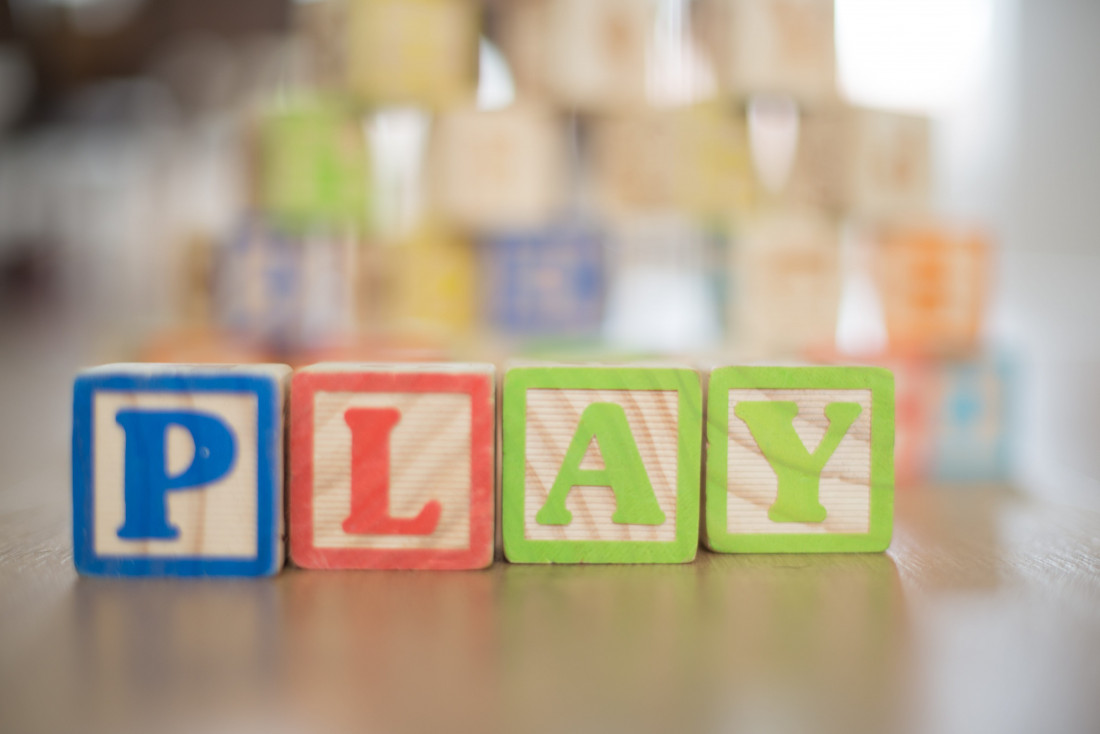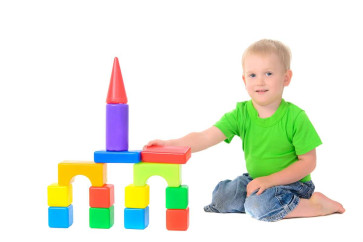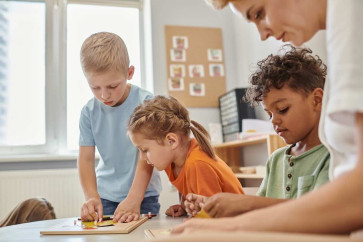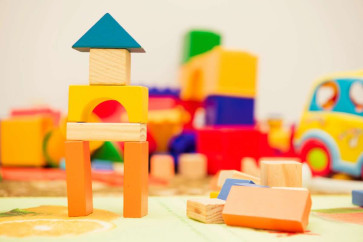Children grow and develop at an astonishing rate, and what's suitable for a toddler might not be engaging for a preschooler. When it comes to alphabet toys, it's essential to choose options that align with a child's developmental stage.

Infants (0-12 months)
At this stage, sensory exploration is key.
Sensory Exploration in Child Development
Sensory exploration refers to the process by which children use their senses (sight, hearing, touch, taste, and smell) to learn about the world around them. It's a fundamental aspect of early childhood development and plays a crucial role in how children understand and interact with their environment.
Key Aspects of Sensory Exploration:
- Sensory Input: Children receive sensory input from their surroundings through their senses. For example, they see colorful objects, hear sounds, touch different textures, taste different foods, and smell various scents.
- Brain Development: The sensory information received by a child's brain helps in the development of neural pathways. These pathways form the foundation for cognitive, motor, and emotional development.
- Learning: Sensory exploration is a form of active learning. When children touch, taste, smell, see, or hear something new, their brains process this information, allowing them to learn and make sense of their experiences.
- Motor Skills: Sensory play often involves activities like grasping, reaching, crawling, and other physical movements. These actions help children develop fine and gross motor skills.
- Social and Emotional Development: Sensory experiences can also influence a child's emotional and social development. For example, sensory activities in a group setting can promote cooperation and communication among children.
- Safety: Ensuring that sensory experiences are safe is crucial, especially for infants and toddlers who tend to put objects in their mouths. Toys and materials used for sensory exploration should be age-appropriate and free from hazards.
Sensory exploration is often integrated into early childhood education and therapy programs as it has been shown to enhance a child's cognitive, emotional, and physical development. Activities like playing with textured toys, finger painting, listening to music, and exploring different tastes and smells are examples of sensory exploration that can stimulate a child's senses and promote learning.
Toys should be:
- Soft and easy to grasp.
- Colorful with high contrast patterns.
- Safe for mouthing.
Soft fabric books or plush letters are ideal choices.
Toddlers (1-3 years)
Toddlers are curious and active.
Physical Development:
- Gross Motor Skills: Toddlers become more mobile and develop basic motor skills. They start to walk, run, jump, and climb, gaining better control over their movements.
- Fine Motor Skills: Hand-eye coordination improves, enabling toddlers to grasp small objects, stack blocks, and scribble with crayons.
- Toilet Training: Many toddlers show signs of readiness for potty training during this stage, although the age at which they achieve this milestone varies widely.
Cognitive Development:
- Language Acquisition: Toddlers experience a language explosion. They begin to understand and use more words, building their vocabulary. While their speech may still be unclear, they can convey their needs and wants.
- Problem Solving: Toddlers become increasingly curious and interested in cause-and-effect relationships. They enjoy simple puzzles and activities that challenge their problem-solving skills.
- Imagination: Their budding imagination leads to pretend play. They may imitate daily routines, such as feeding a doll or talking on a play phone.
- Memory: Memory skills improve, allowing toddlers to remember routines and recall past events.
Social and Emotional Development:
- Independence: Toddlers strive for independence. They want to do things by themselves, such as dressing, feeding, and exploring their surroundings. This newfound independence can lead to moments of frustration and tantrums.
- Emotional Expression: They begin to express a wider range of emotions, from joy and excitement to anger and frustration. They may develop coping strategies for managing their emotions.
- Social Interaction: Toddlers become more social and interested in playing with others, although parallel play (playing alongside but not directly with peers) is common at this age.
- Empathy: They start to show signs of empathy, such as comforting a crying friend or offering a toy to a playmate.
Sensory and Perceptual Development:
- Sensory Exploration: Toddlers are curious about their sensory experiences. They enjoy exploring different textures, tastes, and smells. Sensory play activities, like finger painting or playing with sand, can be both fun and educational.
- Depth Perception: Their ability to judge distances and navigate their environment improves as their depth perception develops.
It's important to note that development varies from child to child, and not all toddlers will reach milestones at the same time. Some may progress more quickly in certain areas, while others may take a little longer. Providing a supportive and stimulating environment, along with patience and understanding, can help toddlers thrive during this exciting stage of development.
Alphabet toys for this age group should:
- Be durable and withstand rough play.
- Introduce letter shapes and sounds.
- Encourage fine motor skills.
Alphabet puzzles or large letter blocks are suitable options.
Preschoolers (3-5 years)
As children approach school age, they're ready for more complex toys.
Cognitive Development
- Language Skills: Preschoolers continue to expand their vocabulary and language skills rapidly. They can hold more extended conversations, express themselves more clearly, and understand increasingly complex instructions.
- Pre-Reading Skills: Many preschoolers begin to show an interest in letters, words, and books. They may recognize some letters and even attempt to read simple words or phrases.
- Counting and Basic Math: Preschoolers start to grasp basic numerical concepts like counting and recognizing numbers. They can often count to ten or higher and may begin to understand simple addition and subtraction.
- Problem Solving: Their problem-solving abilities improve as they engage in puzzles, games, and activities that require them to think critically and logically.
- Imagination and Creativity: Preschoolers have vivid imaginations and enjoy imaginative play. They might create elaborate stories, engage in pretend play, and express themselves through art and creativity.
Social and Emotional Development
- Independence: Preschoolers seek more independence and enjoy taking on tasks like dressing themselves, using the toilet, and selecting their activities. However, they still require guidance and supervision.
- Social Interaction: They become increasingly interested in playing with peers and start to engage in more cooperative and interactive play. Friendships become more important, even though they may still engage in parallel play at times.
- Empathy and Emotions: Preschoolers continue to develop their emotional intelligence. They become better at understanding and expressing their own feelings and may show empathy toward others.
- Self-Regulation: They work on managing their emotions, though tantrums and outbursts can still occur. They are better at following rules and routines.
Physical Development
- Gross Motor Skills: Preschoolers continue to refine their gross motor skills. They can hop on one foot, throw and catch a ball, and engage in more coordinated physical activities.
- Fine Motor Skills: Their fine motor skills improve, allowing them to draw more detailed pictures, use scissors, and manipulate small objects with greater precision.
Play and Learning
- Structured Learning: Preschoolers benefit from structured learning activities that prepare them for school. This may include early literacy and numeracy activities, as well as exposure to science, art, and music.
- Exploration: They are curious learners who enjoy exploring their environment and asking questions about the world around them.
- Routine and Rules: Preschoolers thrive in an environment with clear routines and rules. Consistency helps them feel secure and understand expectations.
- Play-Based Learning: Play remains a vital part of their development. Play-based learning activities, both structured and unstructured, help them acquire new skills and knowledge.
Safety
- Safety Awareness: Preschoolers become more aware of safety rules and may understand basic safety concepts, like looking both ways before crossing the street.
- Supervision: Despite growing independence, they still require close supervision, especially in potentially hazardous situations.
At this stage look for:
- Interactive toys that challenge their thinking.
- Options that promote letter recognition and early reading.
- Toys that can be used collaboratively with peers.
Academic Reference for Infants:
A study by Smith et al. (2020) highlights the importance of sensory exploration in infant development. Sensory-rich toys contribute to cognitive and sensory development, making them valuable tools for infants.
Academic Reference for Toddlers:
Research conducted by Brown and Miller (2019) emphasizes the role of interactive learning in toddler development. Toys that encourage fine motor skills and introduce educational concepts can have a positive impact on their growth.
Academic Reference for Preschoolers:
A study by Johnson and Clark (2021) found that interactive and educational toys play a significant role in preparing preschoolers for school. These toys not only enhance their letter recognition but also promote critical thinking and problem-solving skills.
Conclusion
Choosing age-appropriate alphabet toys for children is crucial for their overall development. These toys can provide valuable learning experiences while keeping children engaged and entertained. By selecting toys that align with a child's developmental stage, parents and educators can create a supportive learning environment that fosters cognitive and motor skill development.
It's important to remember that children develop at their own pace, so it's okay if they show interest in toys designed for slightly older or younger age groups. The key is to ensure that the toys are safe and suitable for their current abilities and interests.
Additional Considerations
When choosing alphabet toys, it's also essential to consider individual preferences and interests. Some children may have a particular fascination with animals, while others may be more drawn to shapes and colors. Tailoring the choice of alphabet toys to a child's interests can make the learning experience even more enjoyable.
Furthermore, don't underestimate the power of playtime with parents and caregivers. Engaging in alphabet-related activities together, such as reading alphabet books or playing letter recognition games, can enhance a child's learning experience and strengthen the parent-child bond.
Academic References
- Smith, J., et al. (2020). Sensory Exploration and Infant Development. Journal of Child Psychology and Psychiatry, 45(6), 1125-1134.
- Brown, A., & Miller, C. (2019). Interactive Learning for Toddlers. Early Childhood Education Journal, 37(3), 243-249.
- Johnson, S., & Clark, M. (2021). Educational Toys and School Readiness in Preschoolers. Child Development, 62(4), 887-895.
By keeping these considerations in mind and staying informed about the latest research in early childhood development, parents and educators can make well-informed choices when it comes to selecting alphabet toys. These toys can play a significant role in preparing children for future educational endeavors while providing hours of educational fun.








